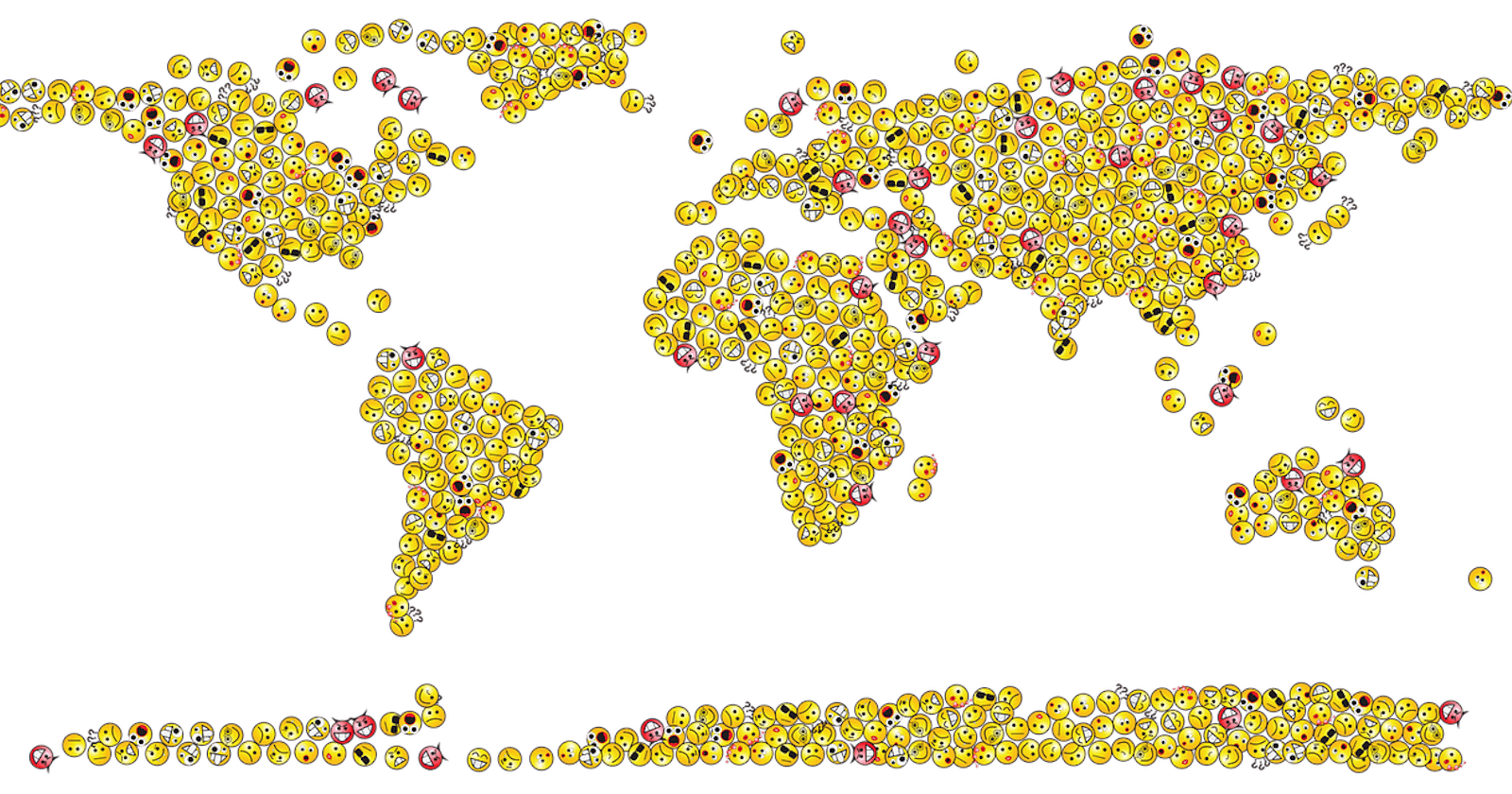In the process of implementing skin tones and fixing emoji issues in Desh Keyboards, I have learned a lot about emojis! Hopefully, someone out there will find this information useful, or at least interesting.
The Emoji world is expanding day by day from SMS, Social Media, to even Git commit messages, How do these simple icons work well on all platforms? Let's find out
A brief history
According to Wikipedia
The emoji was predated by the emoticon, a basic text-based version of the now established Unicode emoji language, and likely took inspiration from pictograms. the term "emoji" in the strict sense refers to such pictures which can be represented as encoded characters, but it is sometimes applied to messaging stickers by extension. Originally meaning pictograph, the word emoji comes from Japanese e (絵, "picture") + moji (文字, "character"); the resemblance to the English words emotion and emoticon are purely coincidental. The ISO 15924 script code for emoji is Zsye.
Emojis is originated in Japan, In the early stages of emojis, Emoji are represented by symbols like :-) for smiley faces, these emojis implemented in Japanese mobile phones in 1997, emoji become increasingly popular worldwide in the 2010s after being added to several mobile operating systems. Emojis are an essential part of every digital communication this time, in 2015 Oxford Dictionaries named the Face with Tears of Joy emoji (😂)the Word of the Year (UK).
A highly influential early set of 176 cellular emoji was created by Shigetaka Kurita in 1999, and deployed on NTT DoCoMo's i-mode, a Mobile web platform. These emojis become popular day by day, Due to the influence of these companies Kurita's designs were once frequently claimed to be the first cellular emoji, but Kurita denied this in interviews and he said he took inspiration from Japanese manga where characters are often drawn with symbolic representations called manpu
The modern set of emojis is standardized by Unicode. Unicode started standardizing the emojis set to solve the issue of supporting emojis in different platforms, in 2009 the Unicode Technical Committee produced a proposed Unicode Emoji Standard, Unicode 6.0 was the first version with a uniform set of emojis
Behind the scenes of emoji?
Emojis are just sequences of Unicode code points like letters in languages, For example, the popular Face with Tears of Joy emoji (😂) is the code point U+1F602, Emoji code point varies from a single code point to multiple code points, basic emojis are single Unicode code points
Emoji communication problems
Emoji are often misunderstood, This misunderstood comes from different cases
Misunderstanding is related to how the actual emoji design is understood by the viewer, For example, the emoji Drop of Blood
🩸has so many meanings it is released to represent menstruation but it is also used to represent donating blood and other blood-related activitiesRendering issue of emojis, if you send an emojis to your friend but her not support that emojis, on his phone instead of rendering emojis, The device shows s a small square box called tofu
☐Another common issue is rendering emojis in different emojis in different operating systems,
What? Why did that happen? You say Unicode standardized the emojis in 2009?yes, that is correct, The Unicode standardized the emoji code point sequences, not the look of an emoji, Each operating system vendor (also some of the other vendors like Whatsapp, Facebook, Twitter, etc) created their own emoji set design and puts their systems. For example,
In April 2020, British actress and presenter Jameela Jamil posted a tweet from her iPhone using the Face with Hand Over Mouth emoji
🤭as part of a comment on people shopping for food during the COVID-19 pandemic. On Apple's iOS, the emoji expression is neutral and pensive, but the emoji shows as a giggling face on other platforms. Many fans were initially upset thinking that she was mocking poor people as a well-off celebrity, but this was not her intended meaning.
THAT LOOKS STRANGE :)
Different types of emojis
we can classify emojis based on their code points
Skin tone variations 🏻🏼🏽🏾🏿
Unicode added the support of skin tone variations in Unicode 8.0 in 2015. This is implemented by the Fitzpatrick scale for measuring human skin color. These modifiers are themselves also Unicode code points, starting at U+1F3FB and ending at U+1F3FF (These modifiers are called EMOJI MODIFIER FITZPATRICK TYPE-1-2, -3, -4, -5, and -6). Totally there are 6 skin tones but the golden variant skin tone is applied by default so it has no code point, also not that U+1F3FA is not golden variant skin tone it is Amphora emoji 🏺

Source: Wikipedia
Variation Selector 16 🗺︎🗺️
There is a special code point that is commonly used in emojis code points, called
Variation Selector 16, with the code point U+FE0F.
What is the use of this? Some emojis have a plain text presentation and emoji presentation,

